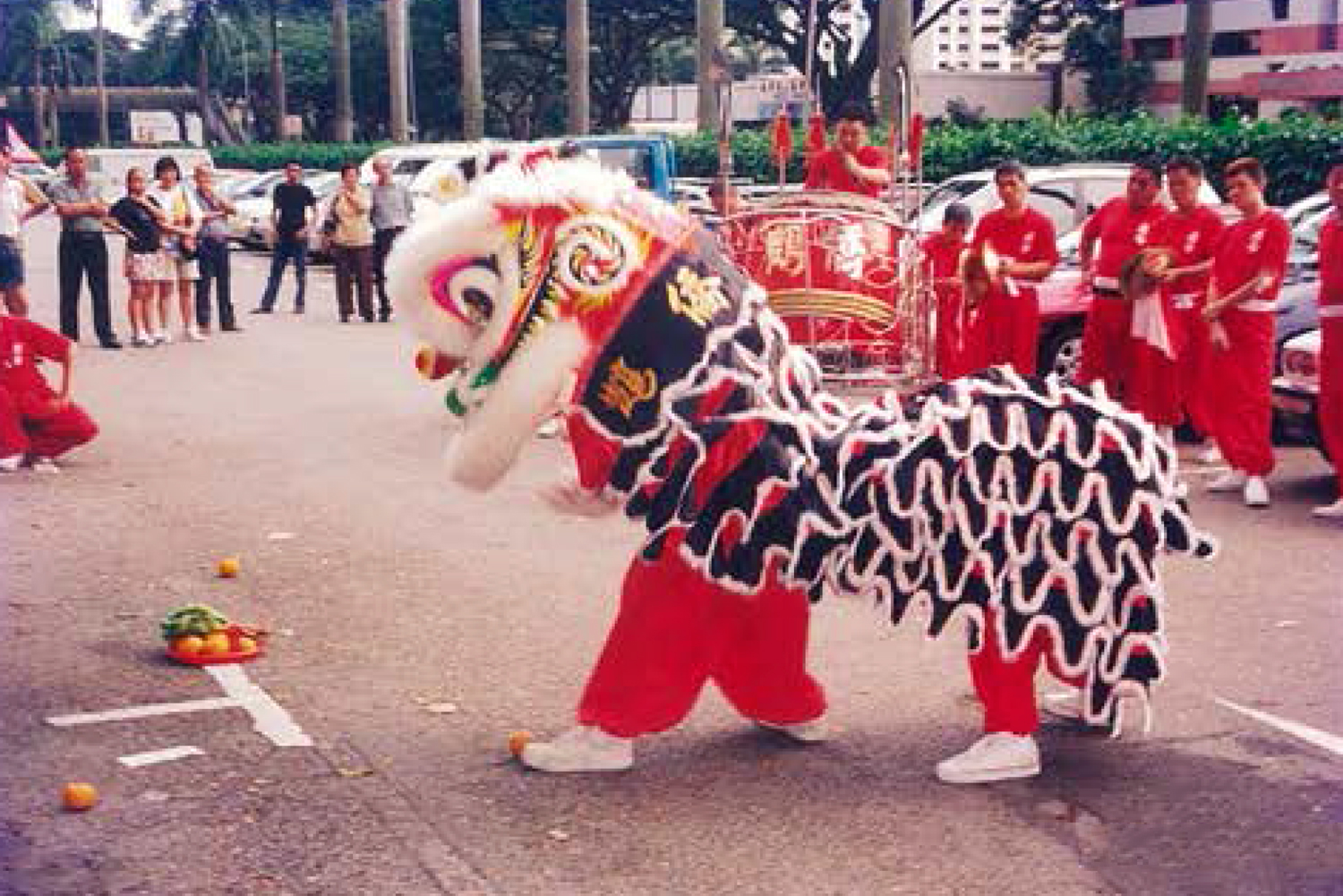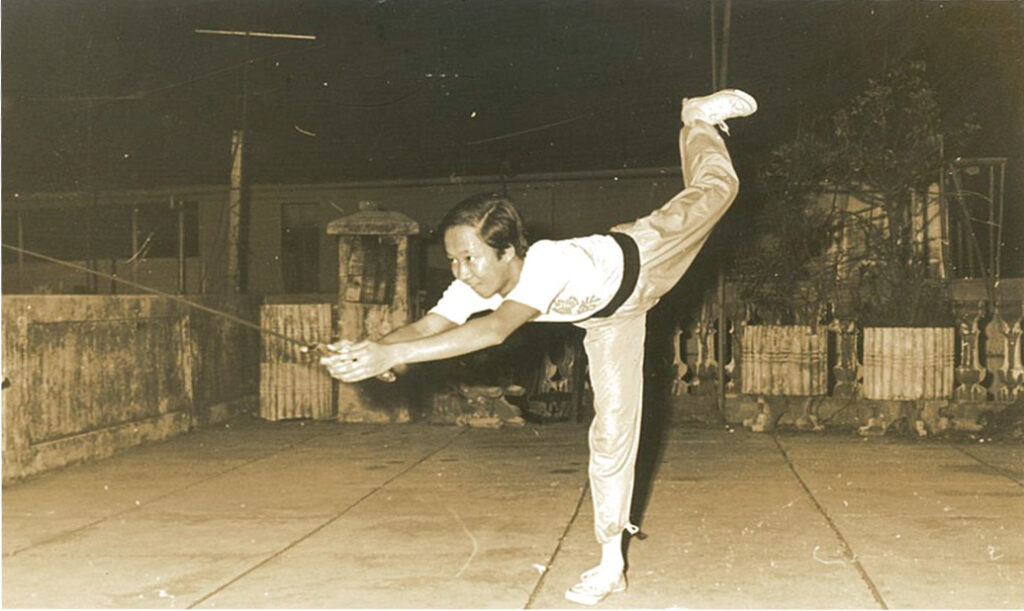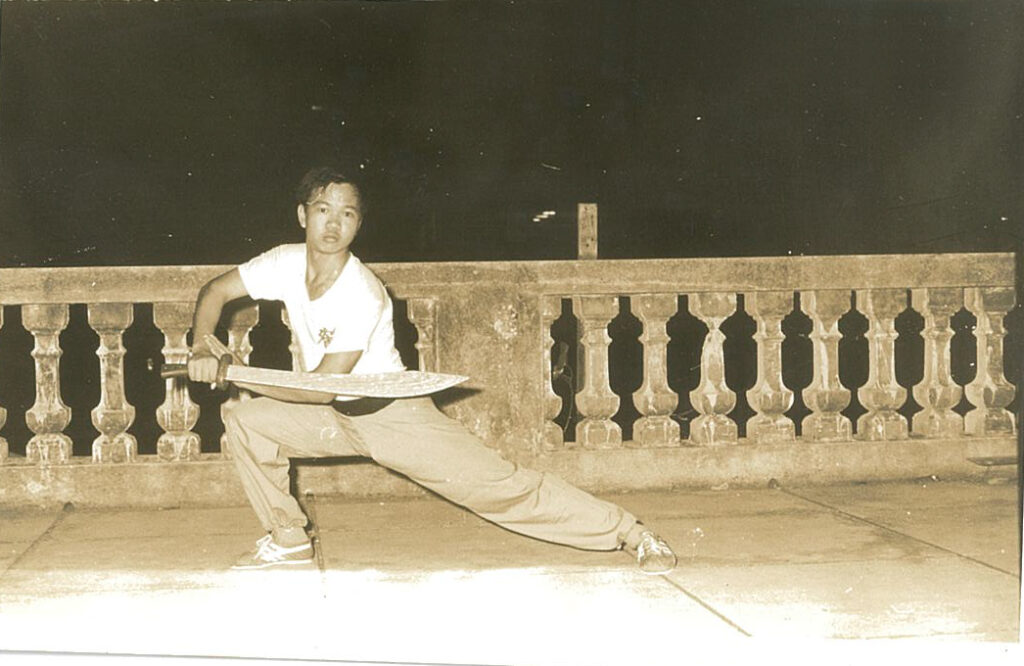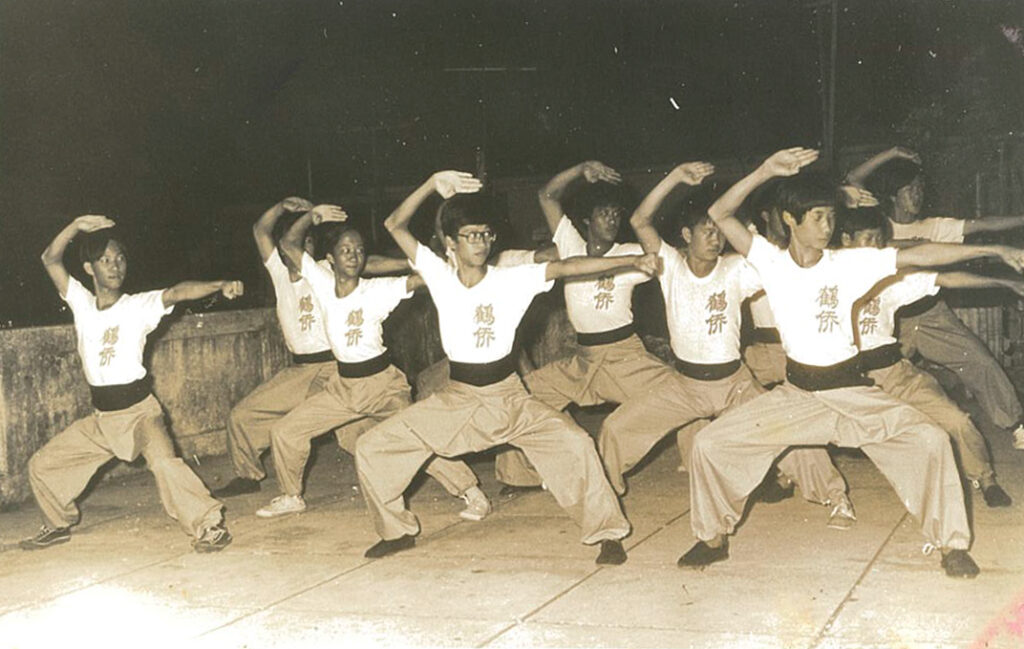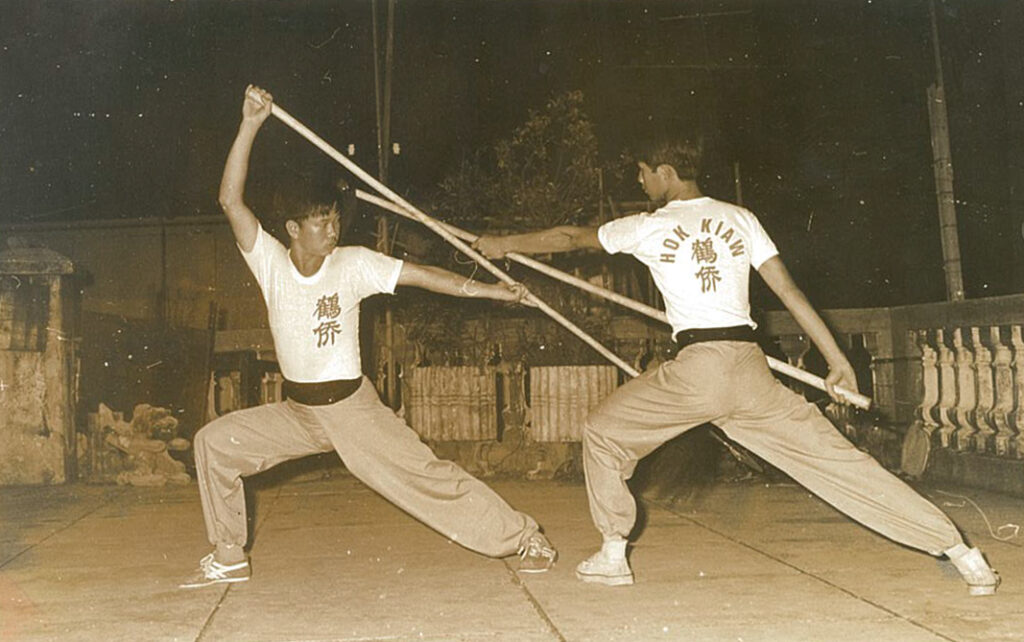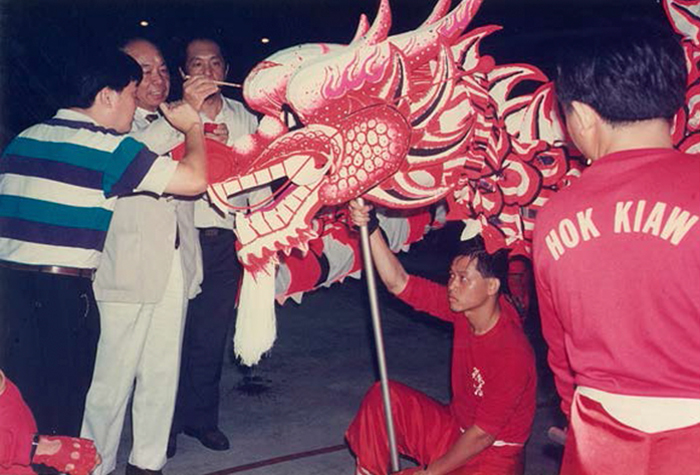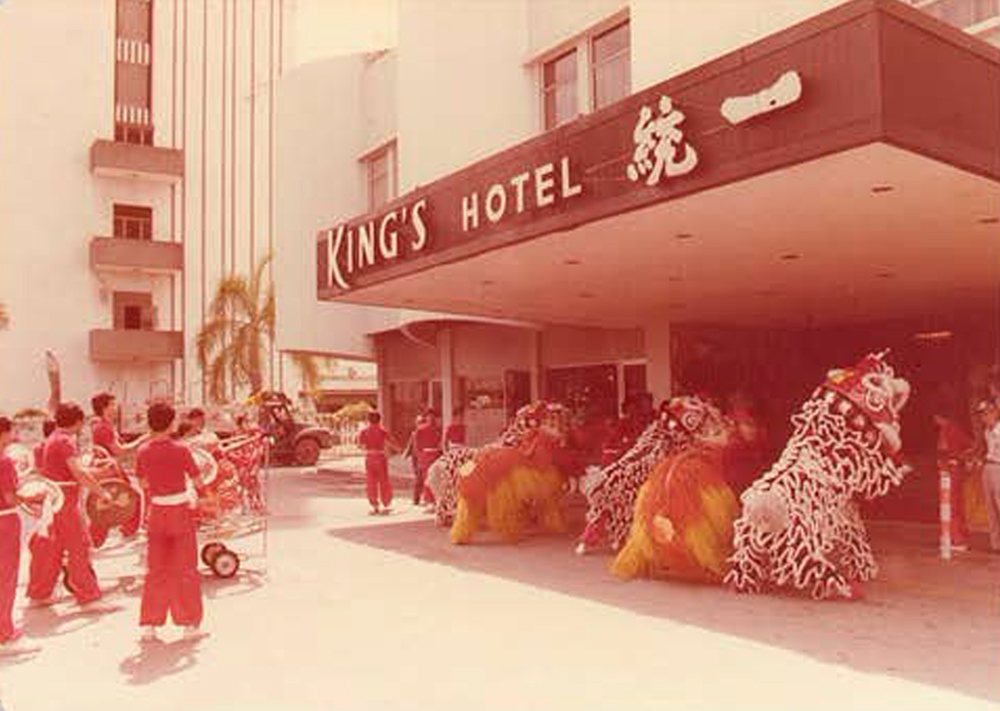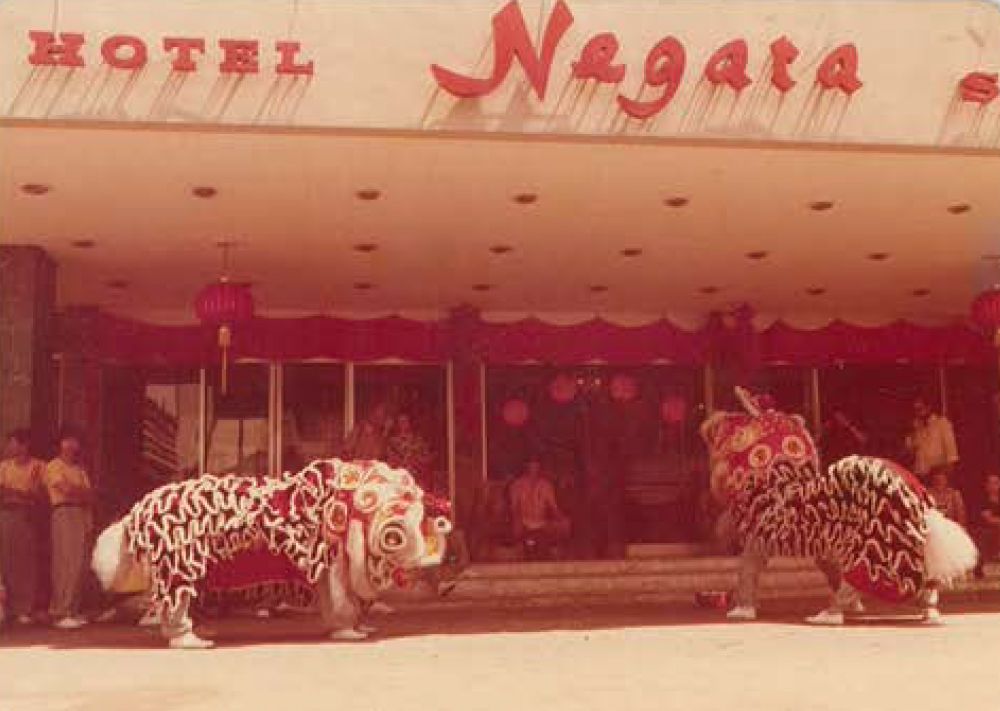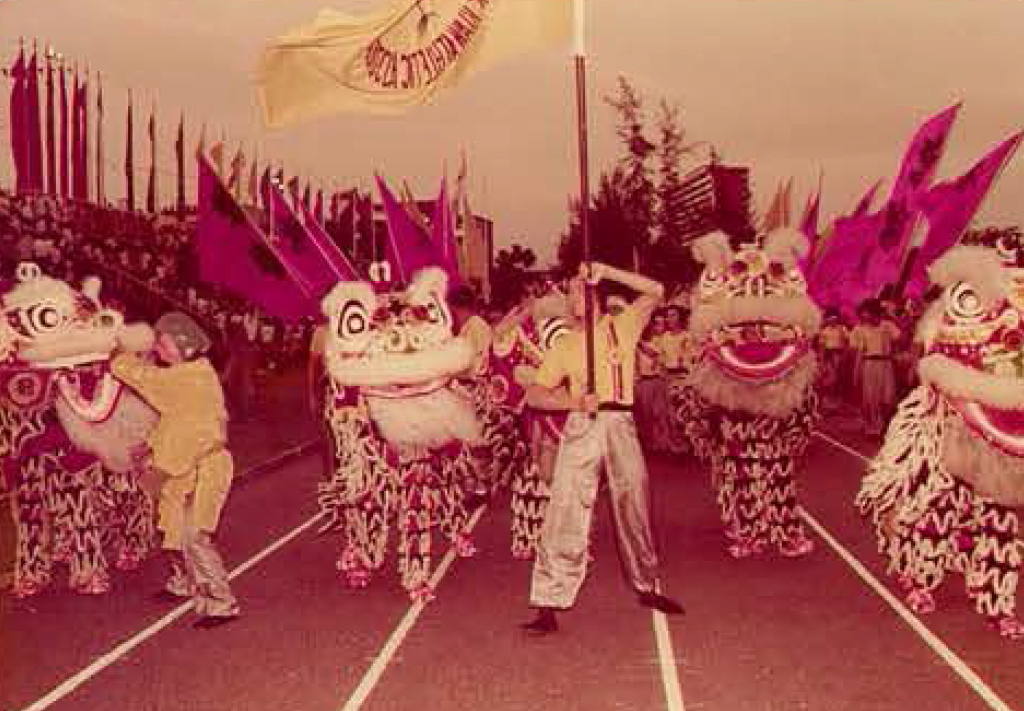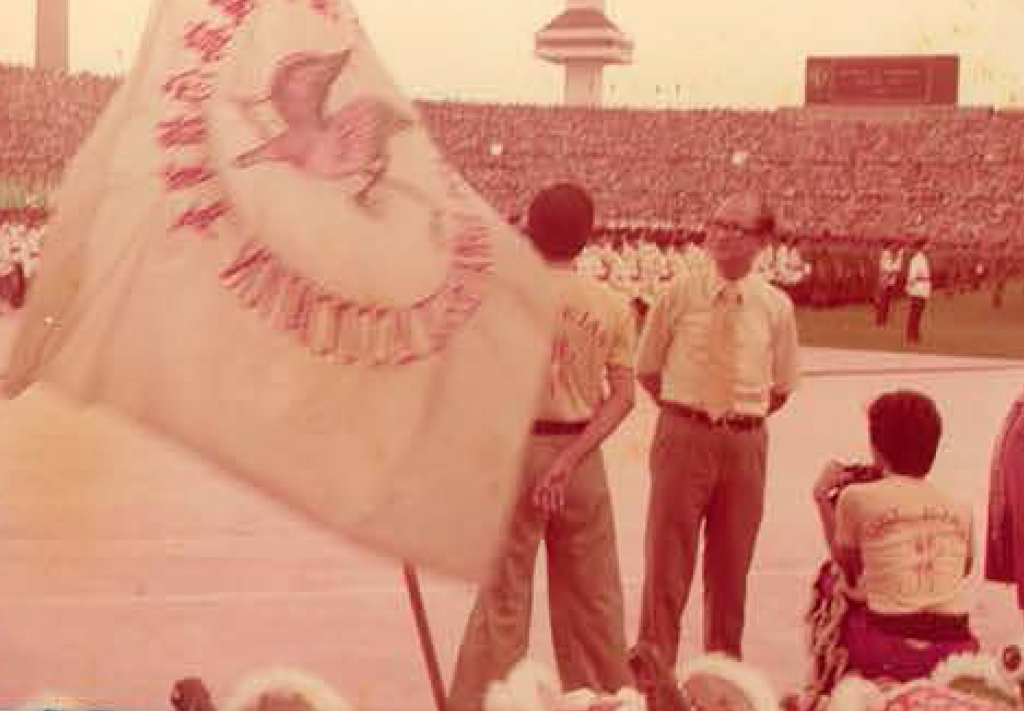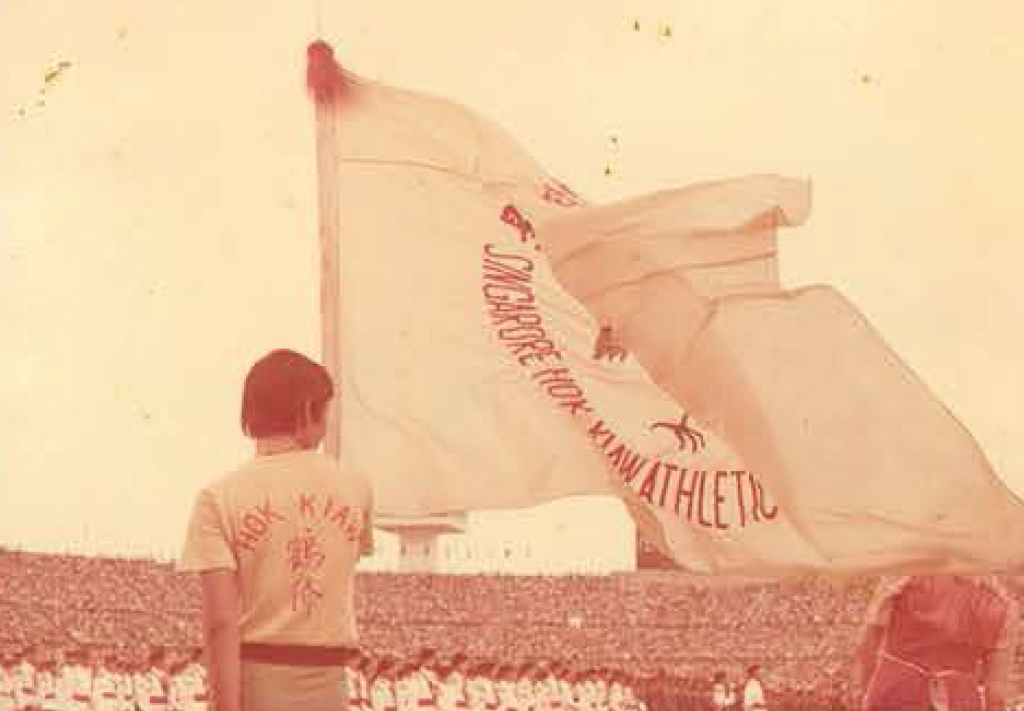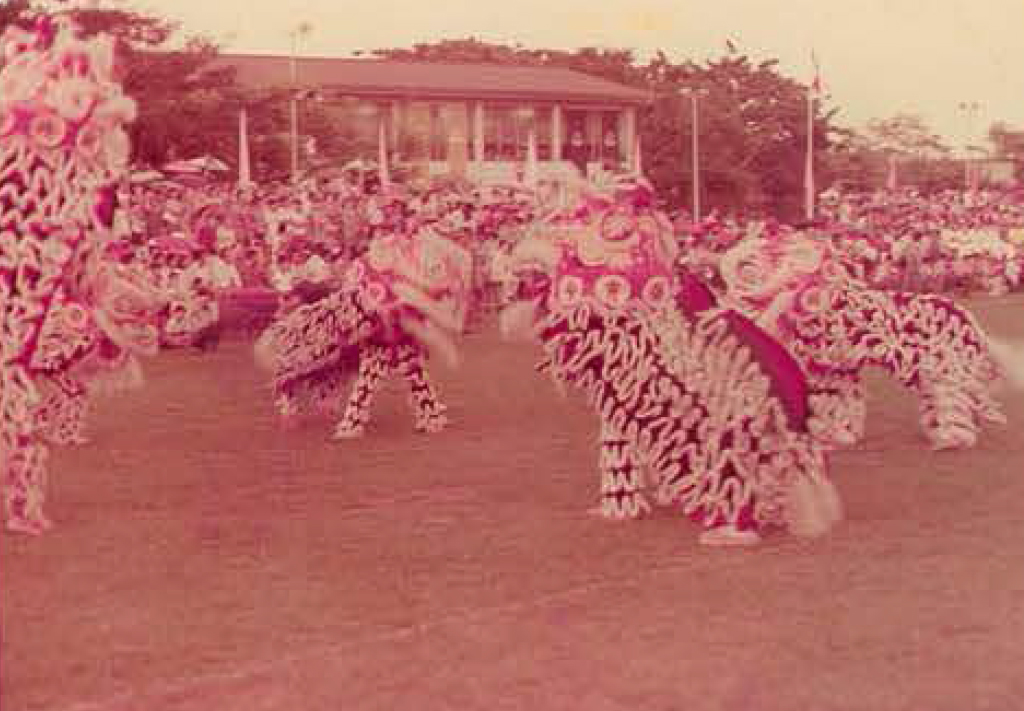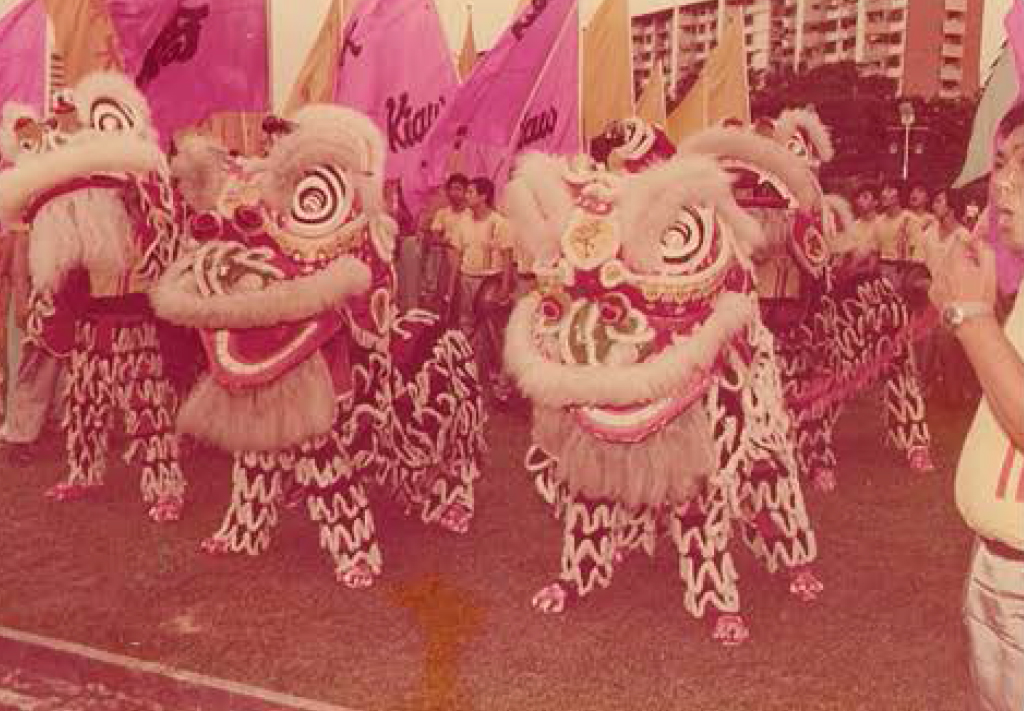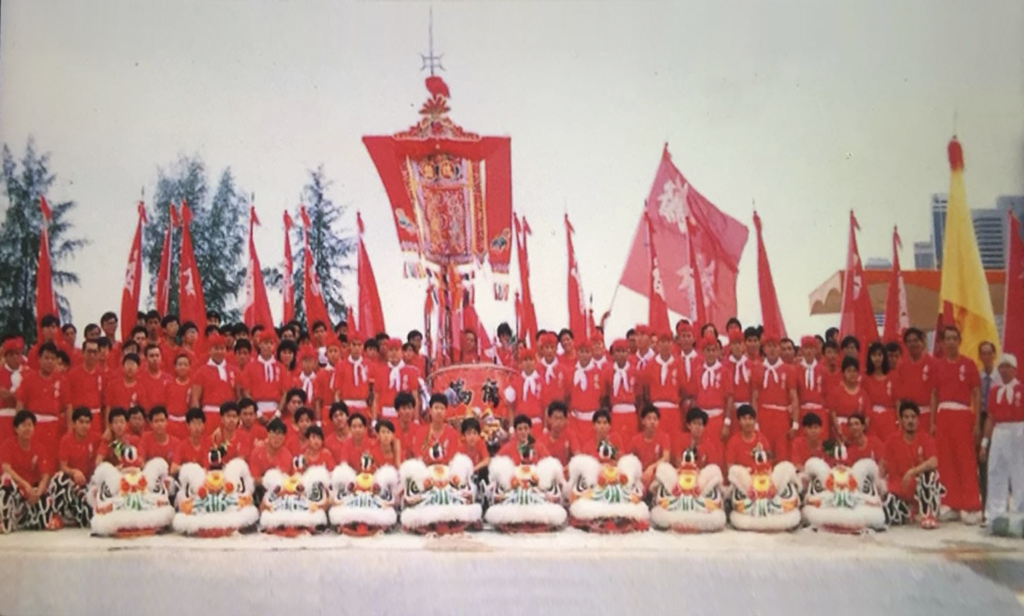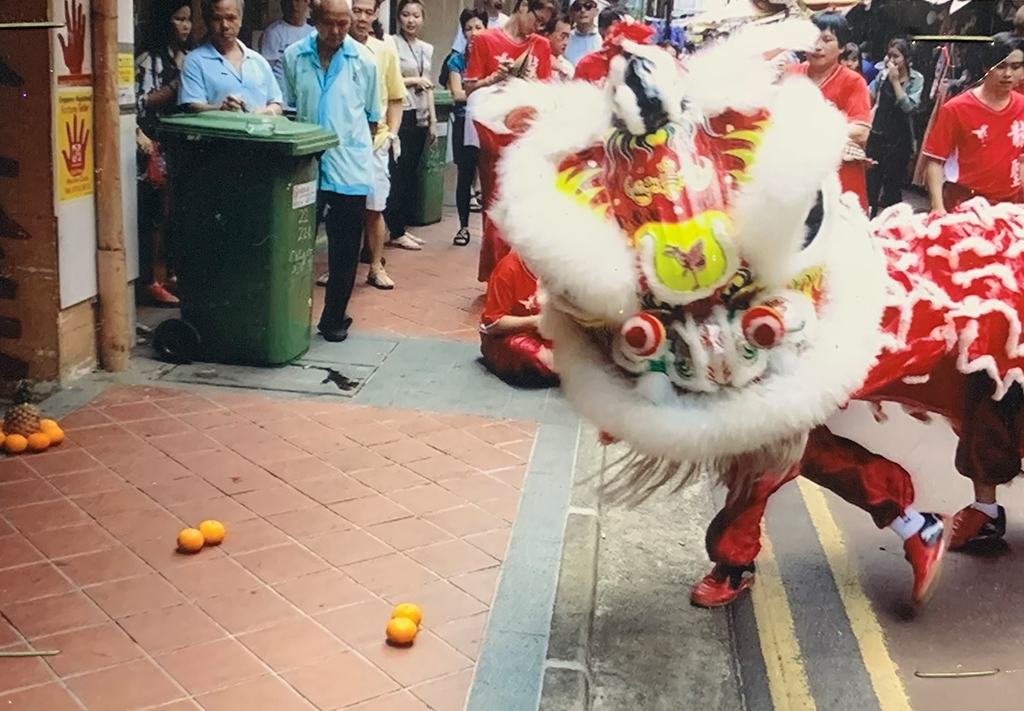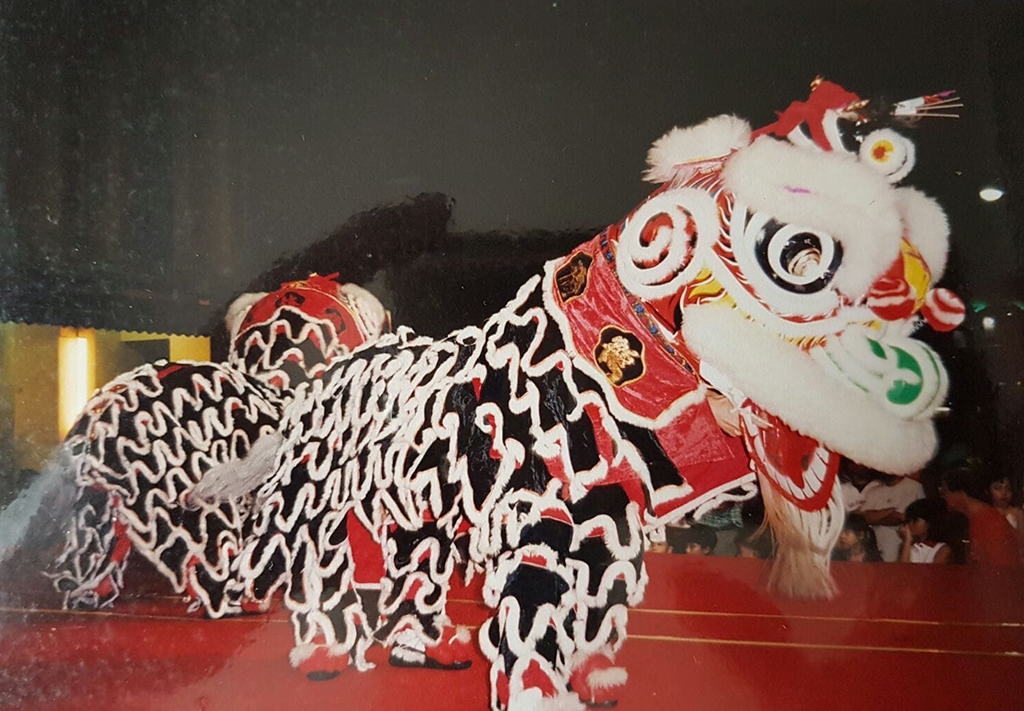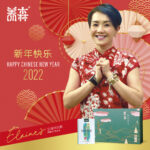EXCLUSIVE INTERVIEW – When the Lion Roars: Hok Kiaw Athletic Association
The lion dance is a pugilistic performance dating back to more than 1,500 years. Its thrilling performance during auspicious occasions such as the launch of new businesses and shops is believed to bring good fortune and wealth.
The lion dance is also performed during the Chinese New Year because of its association with the legends of Nian, a bestial creature that was frightened off by villagers loudly banging on drums and setting up firecrackers on the eve of Chinese New Year.
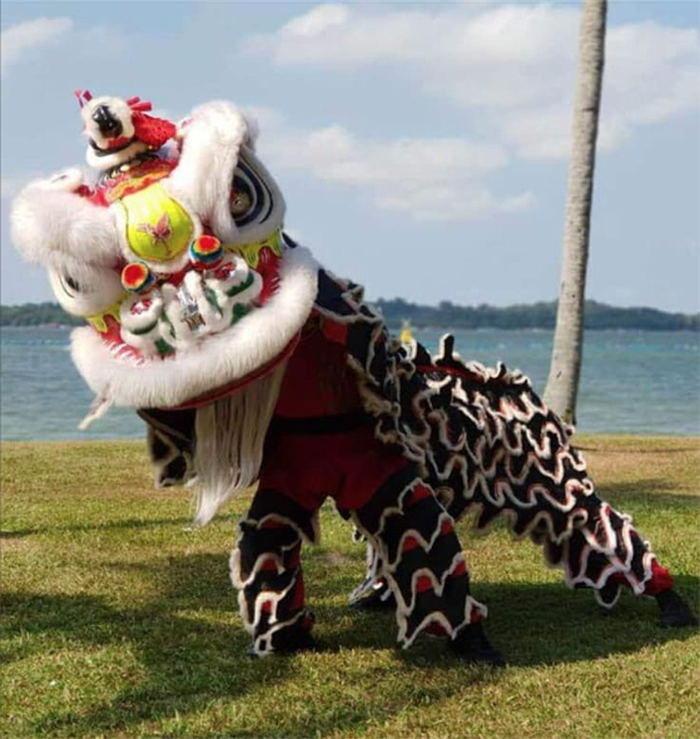
LION DANCE CUSTOMS AND TRADITIONS
Did you know that the Chinese word for lion dance (舞狮) as we know it is not the original word and bears another meaning?
In the past, the Chinese name for lion dance is 武狮, which is the combination of the word Martial Arts (武) and Lion (狮). Hence in the earlier days, disciples must first learn the basics of kung fu.
A solid horse stance (扎马步) is essential to learn the lion dance, so the lion dance certainly requires the foundation of martial arts. They then learn the fundamentals of the musical instruments used such as the cymbals, drum and gong before learning the actual lion dance.
In the present days, martial arts is no longer a basic requirement or taught owing to the diminished culture, in replacement with physical and stamina training as the alternate key essential to perform this art.
VARYING STYLE OF LION DANCE
There are two types of lion dances, namely the northern lion dance and southern lion dance, both differing in the appearance of the lion and performance style.
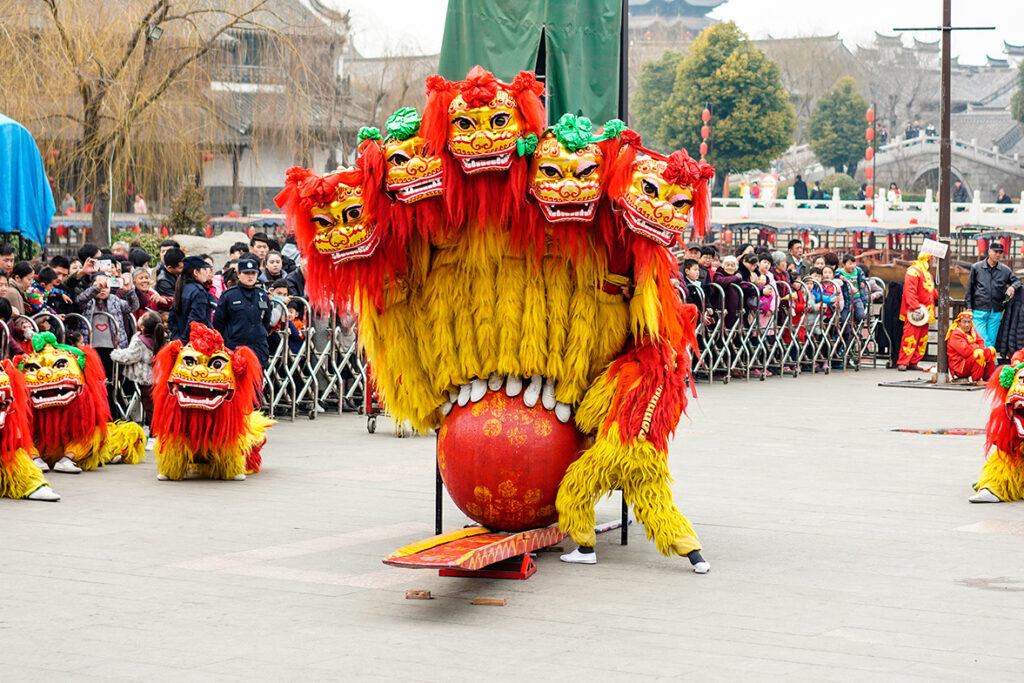
Northern Lion Dance
The northern lion dance which is practised in Beijing, is more acrobatic, with the lion balancing on balls and see-saws while being led by a pugilist dressed as a “warrior” into performing stunts such as prancing and leaping. The northern lion typically has long golden or red hairy fur.
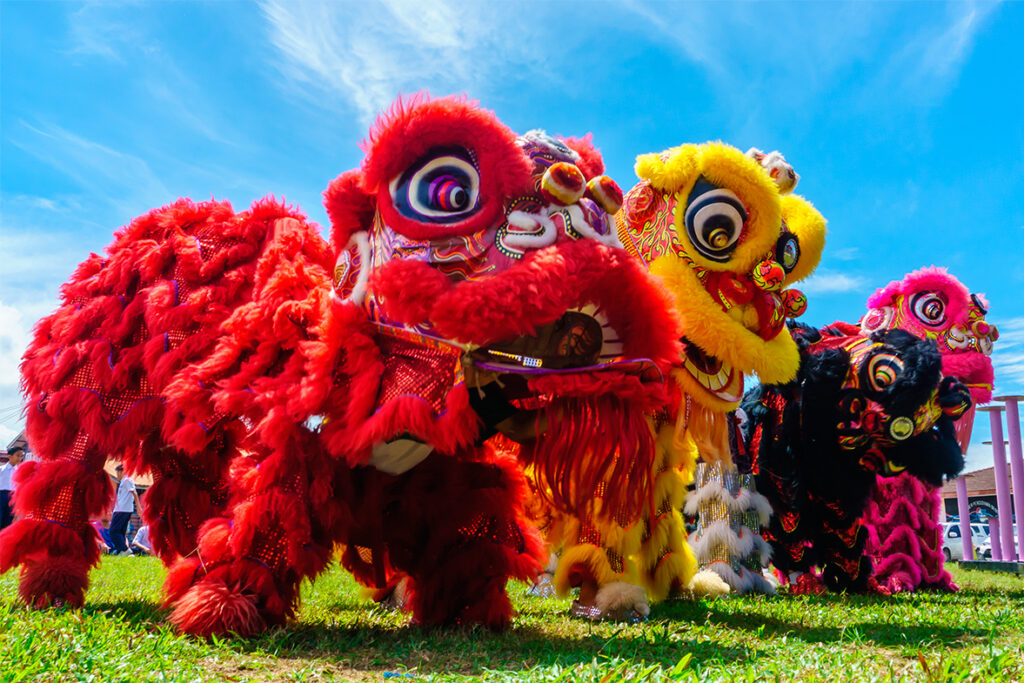
Southern Lion Dance
The southern lion dance, which is more popularly performed in Singapore, originated in Guangdong, China. It involves a less hairy lion that is taunted by a big-headed clown and is traditionally performed outdoors. The caiqing, literally “plucking the green”, which refers to the acrobatic act of retrieving a sprig of lettuce from as high as three storeys, is achieved by using a pole or forming a human pyramid.
CHRISTENING CEREMONY
Dianjing, or “dotting the eyes” is required to animate the lion or dragon before it can perform. The eyes are traditionally dotted using rooster blood as it is believed that the rooster symbolises positive energy (Yang element) of the animal. In recent times, rooster blood is substituted with regular red paint.
A person of prestige dots the lion head and body in eight key areas namely the forehead, eyes, nose, mouth, ear, horn, back of the head, spine to tail and the limbs, with auspicious sayings as each element in the costume is marked.
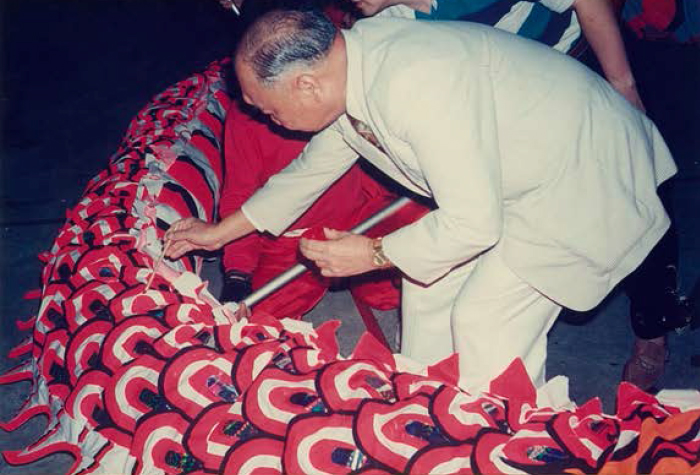
MAJESTIC SOUTHERN CANTONESE LION
The Southern Cantonese lion has a large head painted in bright colours. Its body, known as the lion blanket, is in the form of a cloth painted with stripes, which drapes over the dancers and allows them to move freely. In contrast, in the northern dance, which can be performed by a single dancer or two dancers sharing the same costume, the costume is covered with thick red or golden hair and only exposes the dancers’ legs, which are clad in trousers and boots of the same design.
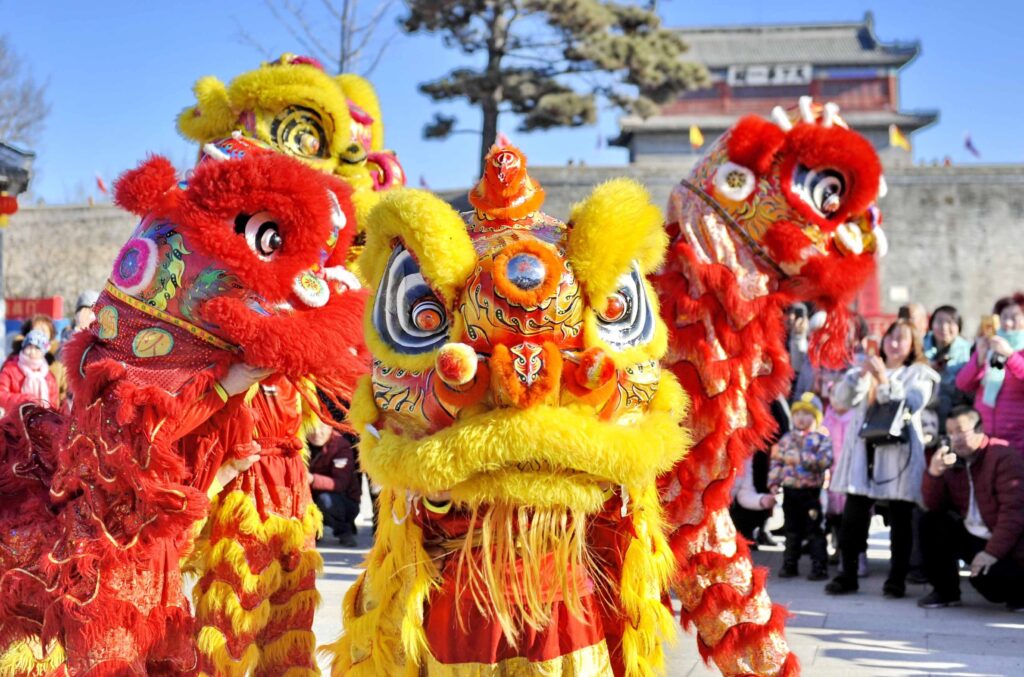
Traditionally, the southern lion’s head is designed to personify the famous historical character, Liu Bei, or one of his five tiger generals from the Three Kingdoms era. A lion head with five colours or orange colour personifies Liu Bei; while a red lion head personifies Guan Yu; a black lion head personifies Zhang Fei; a green lion head personifies Zhao Yun; and a yellow lion head personifies Huang Zhong. In Hoksan (鶴山), southern China, there is another type of lion head – the Futsan (佛山) or huadan (Chinese opera singer) with a face that resembles an opera artist.
The Southern Cantonese lion style of dancing is very much focused on the horse stance (马步). Initially, there were two troupes of Southern Cantonese lion style of dancing. One being the Futsan and the other is the Hoksan.
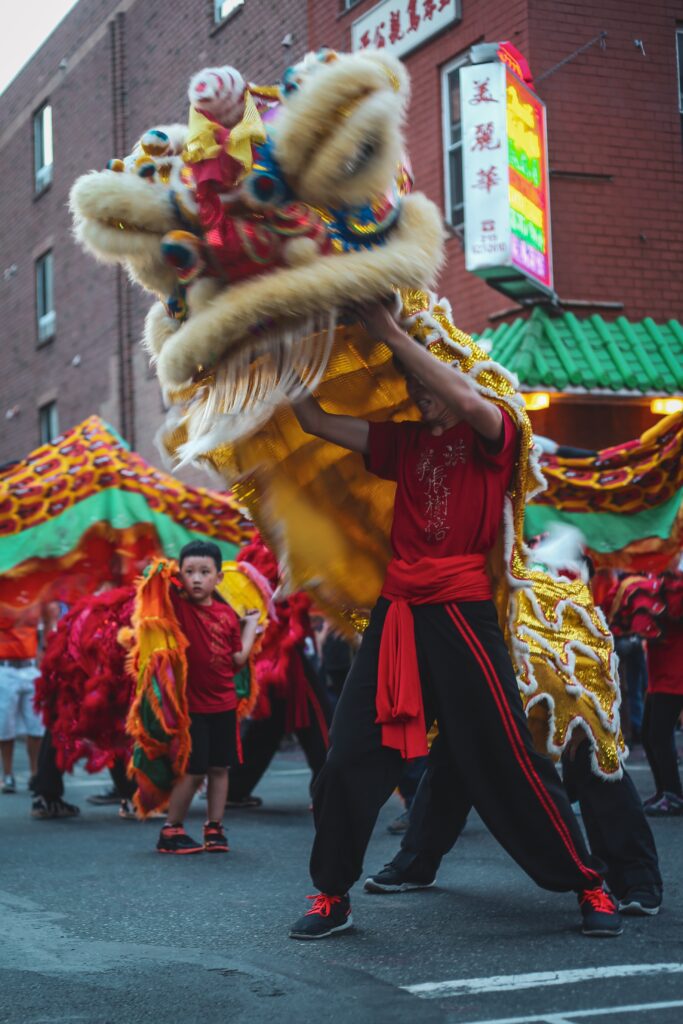
The third lion dance type which is the FutHock (佛鶴) style, incorporates the combination of the art of both FutSan and Hoksan style of moves. The FutHock lion has a round horn on its head and a pair of semi-curved lips.
The Futsan Lion 佛山獅
According to the history of the Southern Lion dance, the Futsan Lion was the first Lion to be created in China. It has a high forehead, curved lips and a very sharp horn on its head. Their dance movements are quite rough and their dancing routine involves big movements.
The Futsan Lion Dancing style is adopted by many kung fu schools. It uses kung fu moves and postures to help with its movements and stances, and only the most advanced students who have learned all the kung fu techniques and musical instruments are allowed to perform.
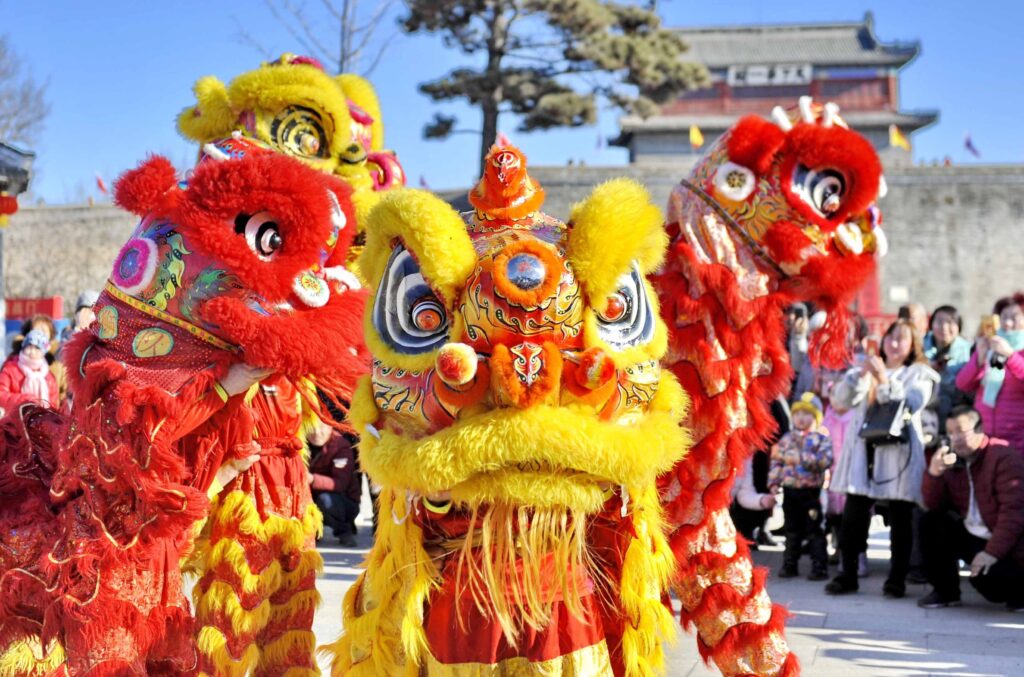
The Hoksan Lion 鶴山獅
The Hoksan style lion is known for its richness of expression, unique footwork, impressive-looking appearance and vigorous drumming style. The Hoksan Lion was created by Master Feng Geng Chang (馮庚長) during the Qing Dynasty. Master Feng learnt his Lion Dance skills from his master, Feng Le Xing (馮紹銜) who was a well-known Chinese medication master and a student of the Shaolin martial school.
Master Feng developed his version of lion dance, introducing new techniques by studying and mimicking the movement of cats, such as “catching a mouse, playing, catching birds, high escape, lying low and rolling”.
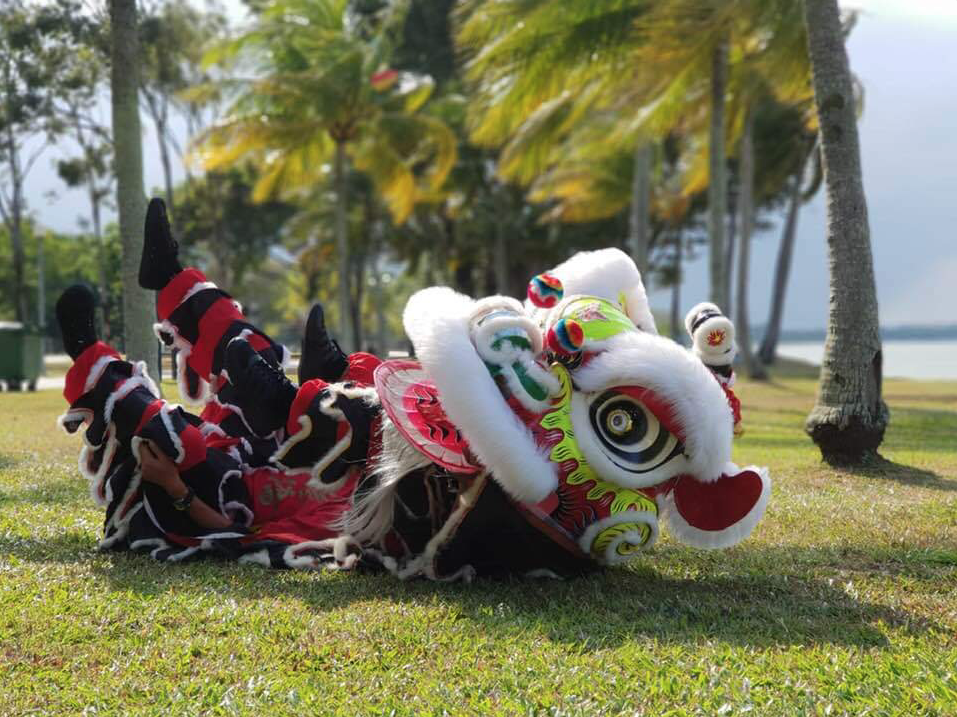
After many generations, the Hoksan Lion Dance Arts and Crafts were passed down to the hands of Master Lu Xing Yao (呂新堯) of the Sar Ping (沙坪) school. Master Lu went to Singapore to spread the Hoksan Sar Ping school’s teaching to Master He Qi Cheng (何啟成) and finally, the Hoksan Sar Ping school’s teaching was passed down to the hands of Master Robin Chan (陳紹箕).
THE BEGINNING OF HOK KIAW ATHLETIC ASSOCIATION
Hok Kiaw Athletic Association today was founded in 1974 after a change of name from the then Singapore Hok Sing Athletic Association (新加坡鹤声體育會). In 1972, the fore-body, Singapore Hok Sing Athletic Association was formed by a group of 13 founding members.
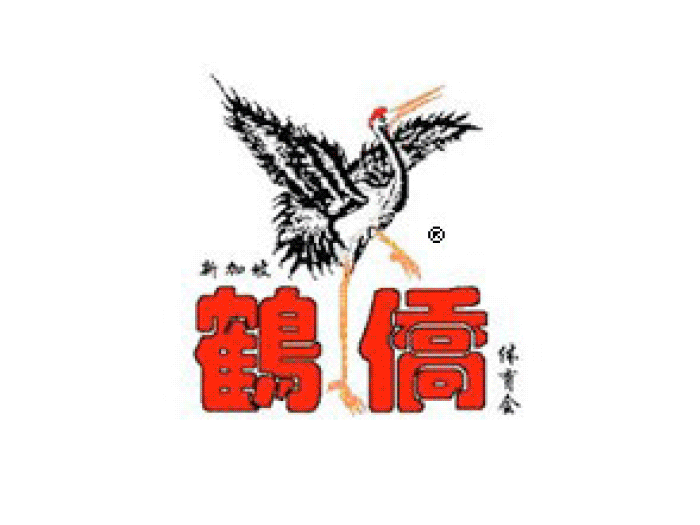
The name of the association (Singapore Hok Sing Athletic Association) was met with much controversy and opposition in 1972 and 1973, but its founding members’ worked hard with great enthusiasm tirelessly towards their interest, common values and goals. And on August 1974, Singapore Hok Kiaw Athletic Association (新加坡鹤僑體育會) is born.
MISSION AND VISION OF HOK KIAW
The association was formed with the aim of promoting the awareness of Wushu and Lion Dance, and to establish a welcoming platform to foster unity and develop the spirit of martial arts as well as encouraging physical fitness.
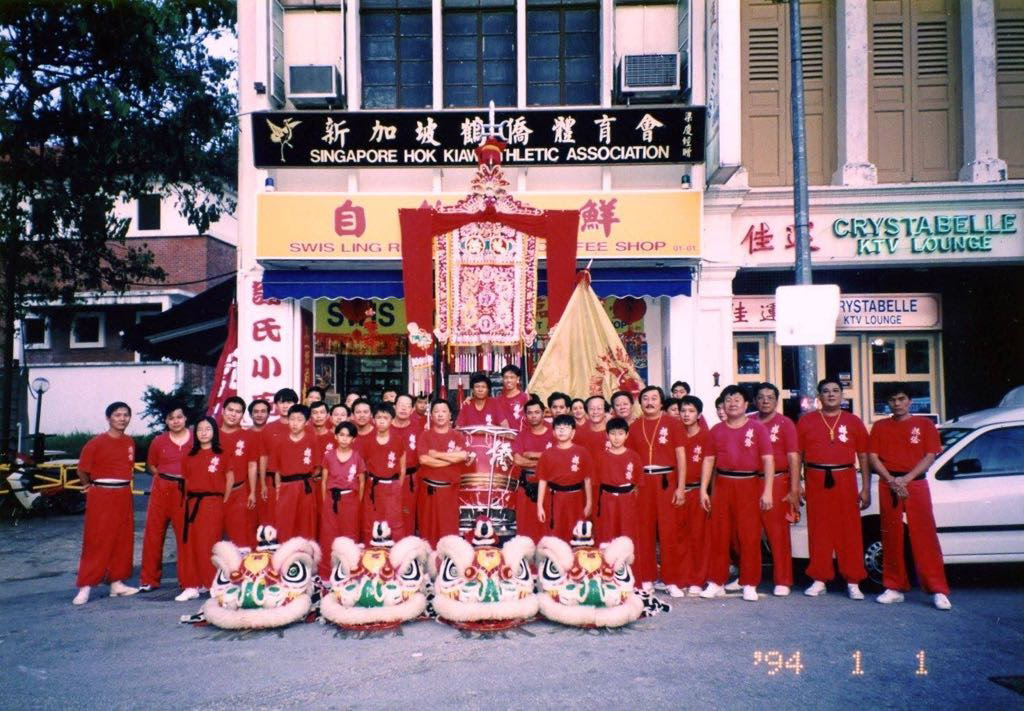
A PRESTIGIOUS AND REPUTABLE LION DANCE TROUPE
In the 1980s and 1990s, Hok Kiaw Lion Dance Troupe was well-known for their thrilling “Plucking the Green” acts and exciting lion dance performances. The talented troupe got invited regularly to perform in business openings, Chinese New Year celebration events and many more.
Many of their regular clients are renowned hotels like Orchard Hotel, Copthorne King’s Hotel (formally known as King’s Hotel) and Pan Pacific Hotel (previously known as Hotel Negara).
MASTER ROBIN CHAN: WORLD LION DANCE DRUMMING KING
Master Robin Chan Siew Kee, co-founder of Hok Kiaw Athletic Association was born in 1947. He started his lion dance career when he joined the Singapore Hok San Association at a tender age of eight. At age 12, he became the lion head in a small lion dance group, where he learned from master Ho Soon lion dance and drumming technique.
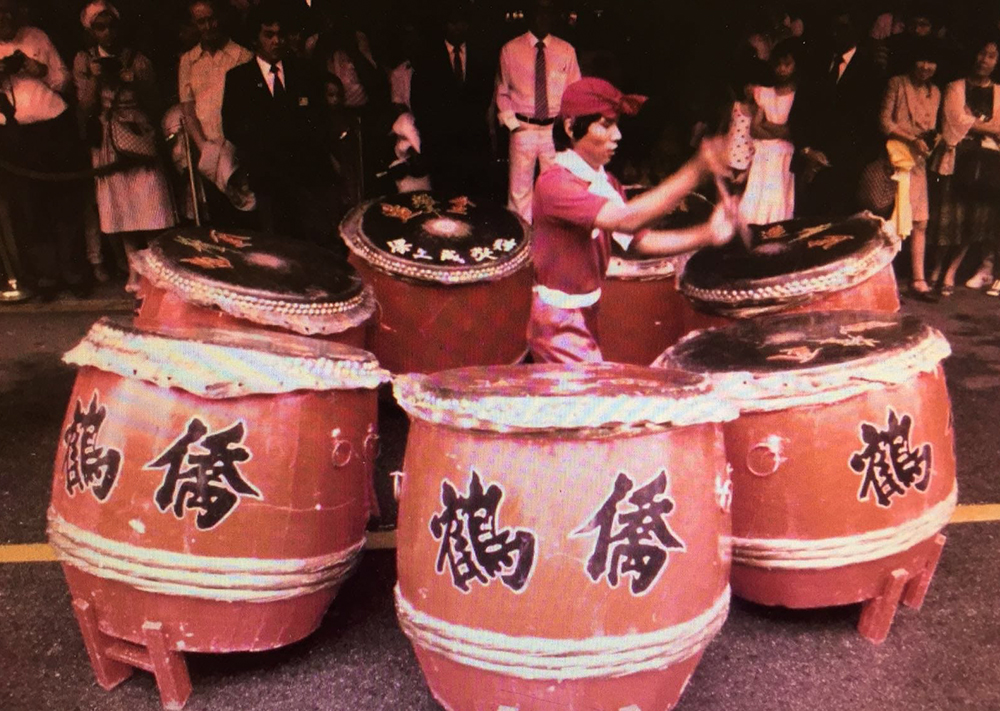
In 1990, he was appointed as the head drummer of the 200 lions for the Silver Anniversary of the founding of Singapore by the Singapore National Wushu Federation. His devotion and dedication in lion dance drumming had earned him the title “World Lion Dance Drumming King.”

With over two million views in Master Chan’s Youtube video, watch his impressive drum performance below.
A JOURNEY THROUGH TIME
Having participated in numerous National Day Parade, Hok Kiaw Lion Dance Troupe is no stranger to parading through a huge roaring crowd of audiences.
One of the most impressive National Day parades they have participated in was in 1988, when the Hok Kiaw troupe performed a spectacular show with 10 of their majestic lions, dancing from Padang to downtown Orchard. The troupe’s youngest participant of the 1988 National Day Parade was 13 years old.
Besides the NDP, Hok Kiaw also frequently participated in Chinese New Year events. Click the video below to watch one of their magnificent lion dance performances during the Chinese New Year celebration in 1993.
HOK KIAW FOUNDERS: BUILDING A LEGACY
The highly respectable founders of Hok Kiaw Athletic Association, late Grandmaster Leong and Grandmaster Ho have passed on the traditional art and culture of lion dance to the next generation.
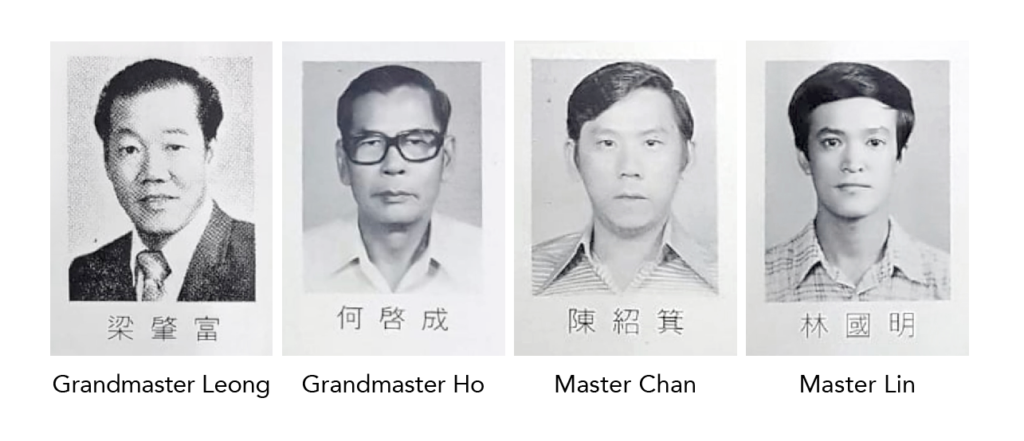
Founders Master Robin Chan Siew Kee and Master Lin Guo Ming are still active with their teachings in recent years. Leading many renown lion dance troupes to win international competitions, the honourable masters continue to advocate the art and culture of the lion dance.
PRESERVING THE LION DANCE CULTURE
Lion dance teaches discipline, integrity, loyalty, honour and self-development. It is a sophisticated ancient art that not many people can learn without the resources and knowledge taught by a Master, he who has given his time to spread the art of lion dancing to the next generation.
The generation ahead must not let the spirit and art of lion dance past and to continue the heritage and culture so that lion dancing will continue to flourish worldwide.
CALLING ALL ASPIRING LION DANCERS



Ever wondered what it is like to perform lion dance? Singapore Hok Kiaw Athletic Association welcomes people from all walks of life; regardless of age, race or gender. Join the lion dance troupe and learn about the expressive artistry of lion dance. Contact Phillon via the link below for any enquiry.

